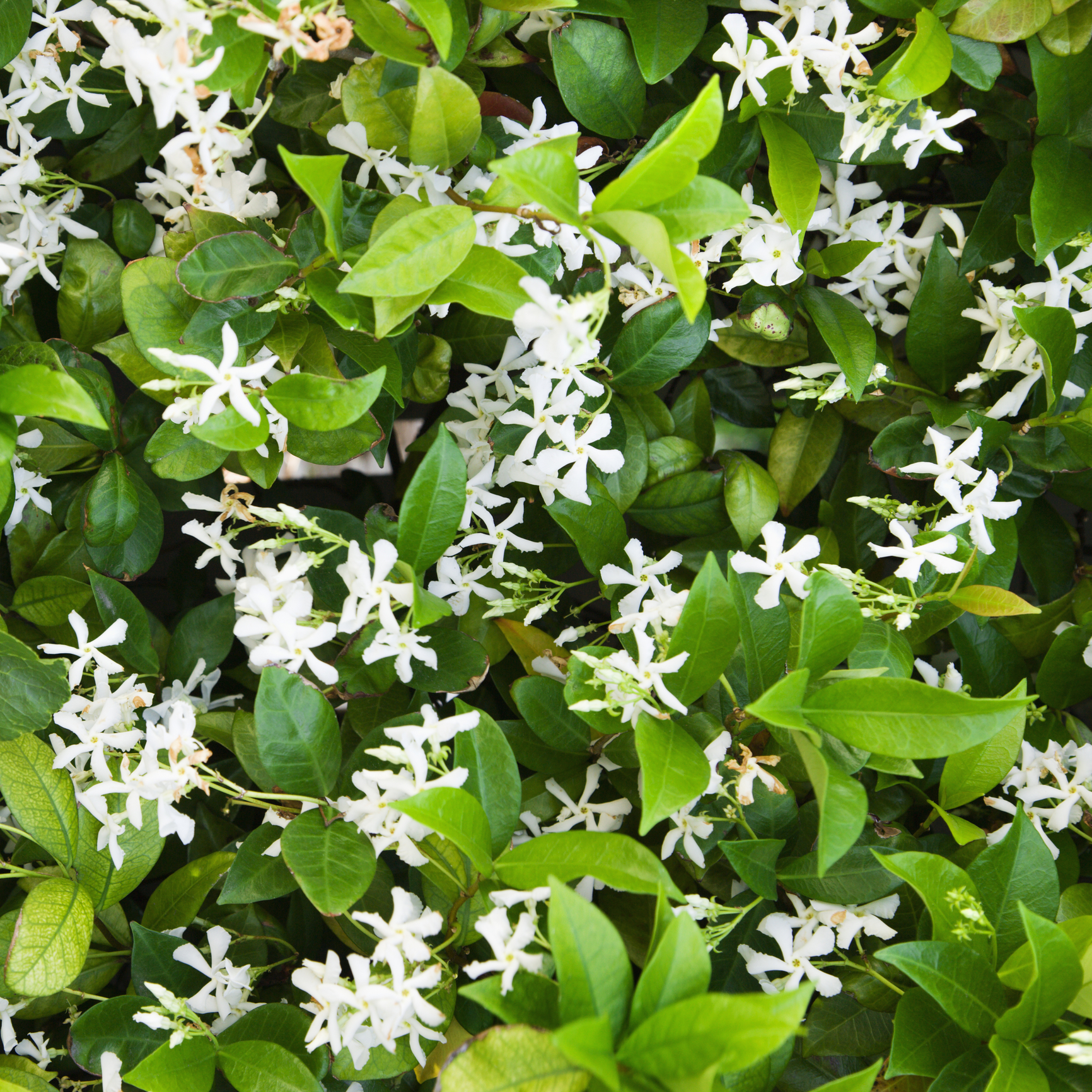Jasmine
A little bit about jasmine
If you know the sweet scent of jasmine, you know it’s impossible to forget. In fact, you can probably smell jasmine before you can see it. Not surprisingly, it’s one of the perfume world’s most popular aromas. Beyond its famous fragrance, jasmine is adorned with masses of flowers and offer fast growth and hardiness. Jasmine is so fragrant, beautiful and easy to grow, it almost seems unfair.
There are about 200 true jasmine varieties, which include jasmine polyanthum, jasminum sambac (biblical jasmine) and jasminum mesnyi (Japanese jasmine). Then there are the common-name jasmines, like star jasmine and Carolina jasmine. They’re the varieties you know and love, grown in gardens all over Sydney.
For an easy, beautiful sweep of fragrant jasmine in your garden, scroll down for our top three jasmine varieties below.
Botanical name: Jasminum
General jasmine caring tips
Ideal spot? Jasmine is not fussy when it comes to soil. But it does prefer moist, well-drained soil with a bit of organic matter. Jasmine grows happily in full sun or part shade and is semi to fully frost hardy.
How to prepare for planting? Dig through composted cow manure.
Feeding
Jasmine will benefit from a complete fertiliser any time of year.
Pruning
Fast-growing jasmine can get out of control, so make sure to prune after flowering and regularly throughout summer.
Protecting
Caterpillars enjoy jasmine, so hunt for them by looking at both sides of leaves for frass or droppings. Squash egg clusters or use Dipel or Success Ultra.
Watering
Jasmine needs average amounts of water, however it can be drought tolerant once established.
Top three jasmine varieties
Jasmine polyanthum
Potential height: 3 to 6 metres width: 8 metres
Where to grow jasmine polyanthum? This fast growing, vigorous, evergreen, scrambling climber will twine through trees, trellises and anything else you train it on.
When does it bloom? Soft pink buds appear from late winter and open up to become small, starry, white fragrant flowers in early spring through to mid-autumn.
Foliage: Dark green foliage which can have bronze tones in winter.
Chinese star jasmine
Botanical name: Trachelospermum Jasminoides
Potential height: 9 metres width: 5 to 8 metres
Where to grow Chinese star jasmine? The stems will climb over supports and cling to walls, fences, pergolas and hard surfaces with great ease and abandon. Makes great ground cover for larger areas. If you have a courtyard, it’s the pick of all climbers. When grown indoors, it’ll reward you with fragrant blossoms if given at least a few hours of sun in winter.
When does it bloom? Masses of white highly-perfumed lace-like flowers appear from mid-spring to early summer.
Foliage: Rich, glossy, oval leaves pointed at both ends.
Carolina jasmine
Botanical name: gelsemium sempervirens
Other common names: confederate jasmine
Potential height: 6 metres width: 6 metres
Where to grow Carolina jasmine? This variety can be trained on a fence, wall or pergola. Carolina jasmine grows quickly but tidily.
When does it bloom? Sprays of scented long but small yellow trumpet flowers followed by dark fruits appear for many months in spring and again in autumn.
Foliage: Glossy green, long elliptical leaves.




